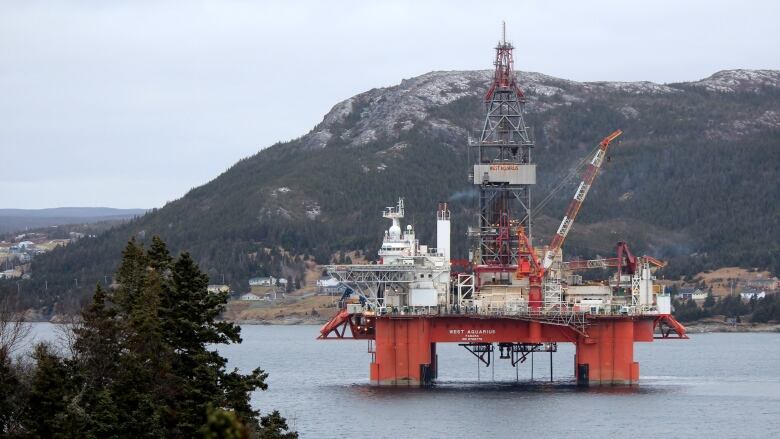So, what is drilling mud, anyway?
136,000 litres of drilling mud spilled from BP Canada's West Aquarius rig last week

On Friday, BP Canada announced that 136,000 litres of drilling mud wasdischarged from its West Aquarius rig about 330 kilometres from Halifax.
The spill was stopped on Friday, and the company is now investigating the cause.
Environmental groups have expressed concern about the effects of the mud, which tends to sink rapidly to the ocean floor.
The Canada-Nova Scotia Offshore Petroleum Board said drilling mud spills result in the physical smothering of the seabed and are usually limited to the area immediately around the well.
But what, exactly, is drilling mud?
Mud often contains minerals and clays
CBC's Mainstreet turned to Grant Wach for answers. He's a professor of geology at Dalhousie University and the director of Dalhousie's Basin and Reservoir Lab, a petroleum research facility that, according to its website, aims to make the university a "beacon for petroleum geoscience research in the Maritimes" and produces research that "will have translation benefits to the offshore oil and gas sector."
Drilling mud is a synthetic-based material that often consists of baryte, a heavy mineral, or bentonite, a type of clay, explained Wach, who used to work in the oil and gas industry.
The mud could also contain other types of clays, such as kaolinite and smectite.
A statement on BP's website states thesynthetic-based oilis non-toxic.The regional manager of BP Canada wasn't able to comment the specific chemicals used in their drilling mud.
Used for cooling and lubricating
The mud has several purposes in the offshore industry, including keeping the drill bit cool and lubricating both the bit and the well.
It also helps keep the well open and removes any materials that emerge as the well is drilled.
Wach likened offshore drilling to a carpenter drilling a hole into a piece of wood.
"If you're a carpenter or a machinist and you're drilling a hole, and you've got the pieces of material that are coming up, those are cuttings," he said. "You have to remove these cuttings. It's the same thing when you're drilling through rocks."
Mud will 'likely dissipate'
Wach said based on studies done in the Gulf of Mexico, the mud that was spilled will likely dissipate over about two years.
But Angela Giles, an organizer with the social justice organization the Council of Canadians which wants to see an end to drilling off Nova Scotia cautioned that the tides and currents in the Gulf of Mexico are "very different" than those in the North Atlantic.
"It doesn't mean that it's not going to have an implication for the environment, whether it stays in one place or disperses over time," she said.
In an email, BP Canada said before drilling began, it conducted a study of the sea floor around the well site using a remotely operated underwater vehicle and found "no aggregations of habitat-forming corals or sponges or any other environmentally sensitive features."
In an emailed statement, the Department of Fisheries and Oceans said it is monitoring the situation and awaiting the results of the C-NSOPB's investigation and review of the incident.
With files form CBC's Mainstreet












_(720p).jpg)


 OFFICIAL HD MUSIC VIDEO.jpg)
.jpg)



























































































